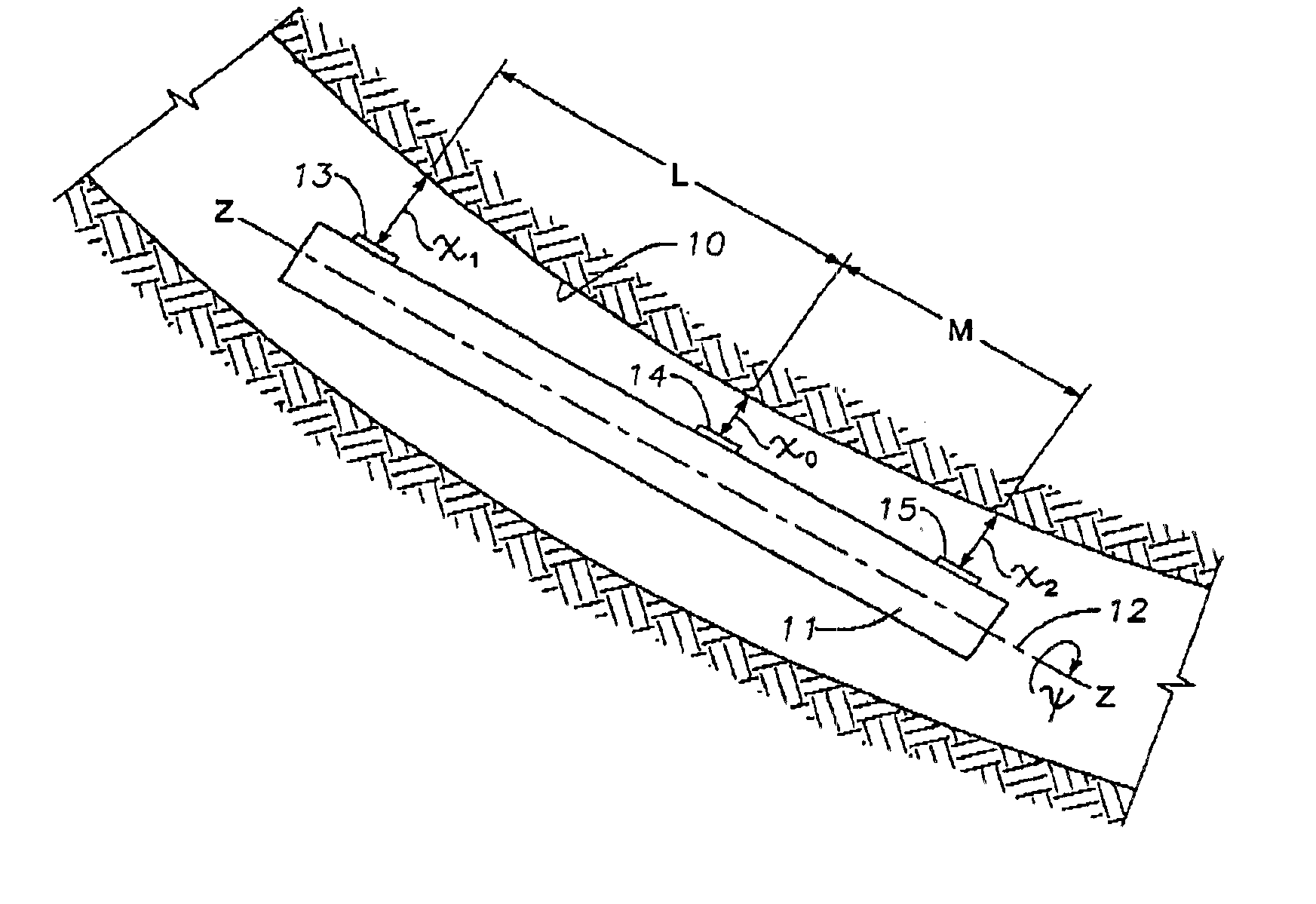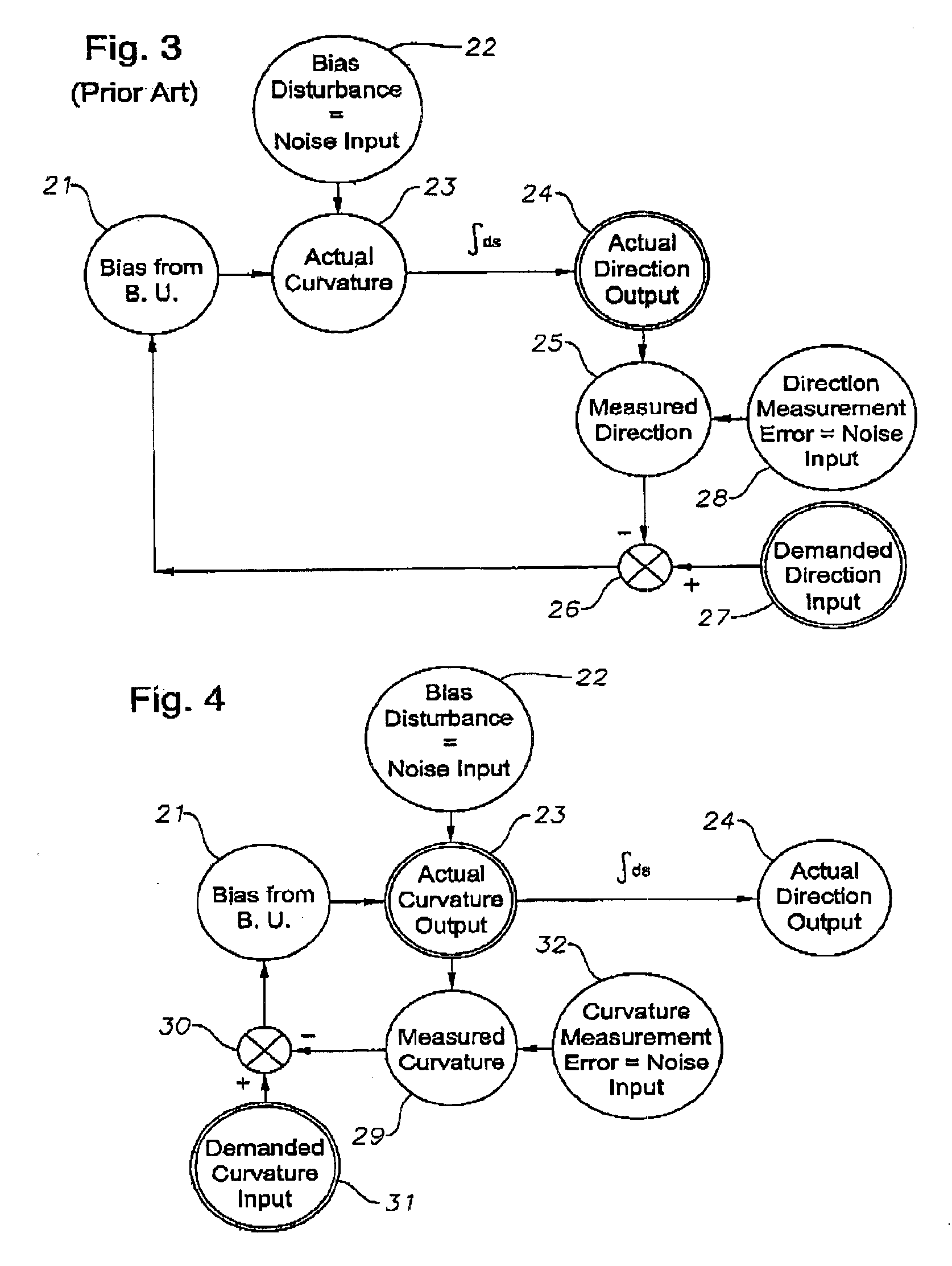Measurement of curvature of a subsurface borehole, and use of such measurement in directional drilling
a technology of subsurface borehole and measurement of curvature, which is applied in the direction of borehole/well accessories, instruments, surveys, etc., can solve the problems of reducing the gain or sensitivity which can be used in the system, adversely affecting the stability of the loop, and the typical direction measurement is subject to variable errors or noise, so as to reduce or minimize the difference between the measured and desired curvature, reduce or minimize the difference between the vector differen
- Summary
- Abstract
- Description
- Claims
- Application Information
AI Technical Summary
Benefits of technology
Problems solved by technology
Method used
Image
Examples
Embodiment Construction
Referring to FIG. 1, there is shown a curved section of a subsurface borehole 10 in which is located an elongate structure 11 forming part of a downhole assembly. As will be described, the structure 11 may comprise part of a directional drilling downhole assembly but the invention is not limited to this application and the structure 11 may be part of any other form of downhole assembly.
The structure 11 may comprise a tubular drill collar which may be non-rotatable, in the case where the drill bit is rotated by a downhole motor, but preferably the structure 11 is rotatable about an axis 12 which extends longitudinally of the borehole 10.
Three distance sensors 13, 14 and 15 are fixedly mounted on the structure 11 and spaced apart along the length thereof. The sensors 13 and 14 are separated by a longitudinal distance L and the sensors 14 and 15 are separated by a longitudinal distance M. All three sensors lie along a line extending parallel to the axis of rotation 12 of the structure ...
PUM
 Login to View More
Login to View More Abstract
Description
Claims
Application Information
 Login to View More
Login to View More - R&D
- Intellectual Property
- Life Sciences
- Materials
- Tech Scout
- Unparalleled Data Quality
- Higher Quality Content
- 60% Fewer Hallucinations
Browse by: Latest US Patents, China's latest patents, Technical Efficacy Thesaurus, Application Domain, Technology Topic, Popular Technical Reports.
© 2025 PatSnap. All rights reserved.Legal|Privacy policy|Modern Slavery Act Transparency Statement|Sitemap|About US| Contact US: help@patsnap.com



